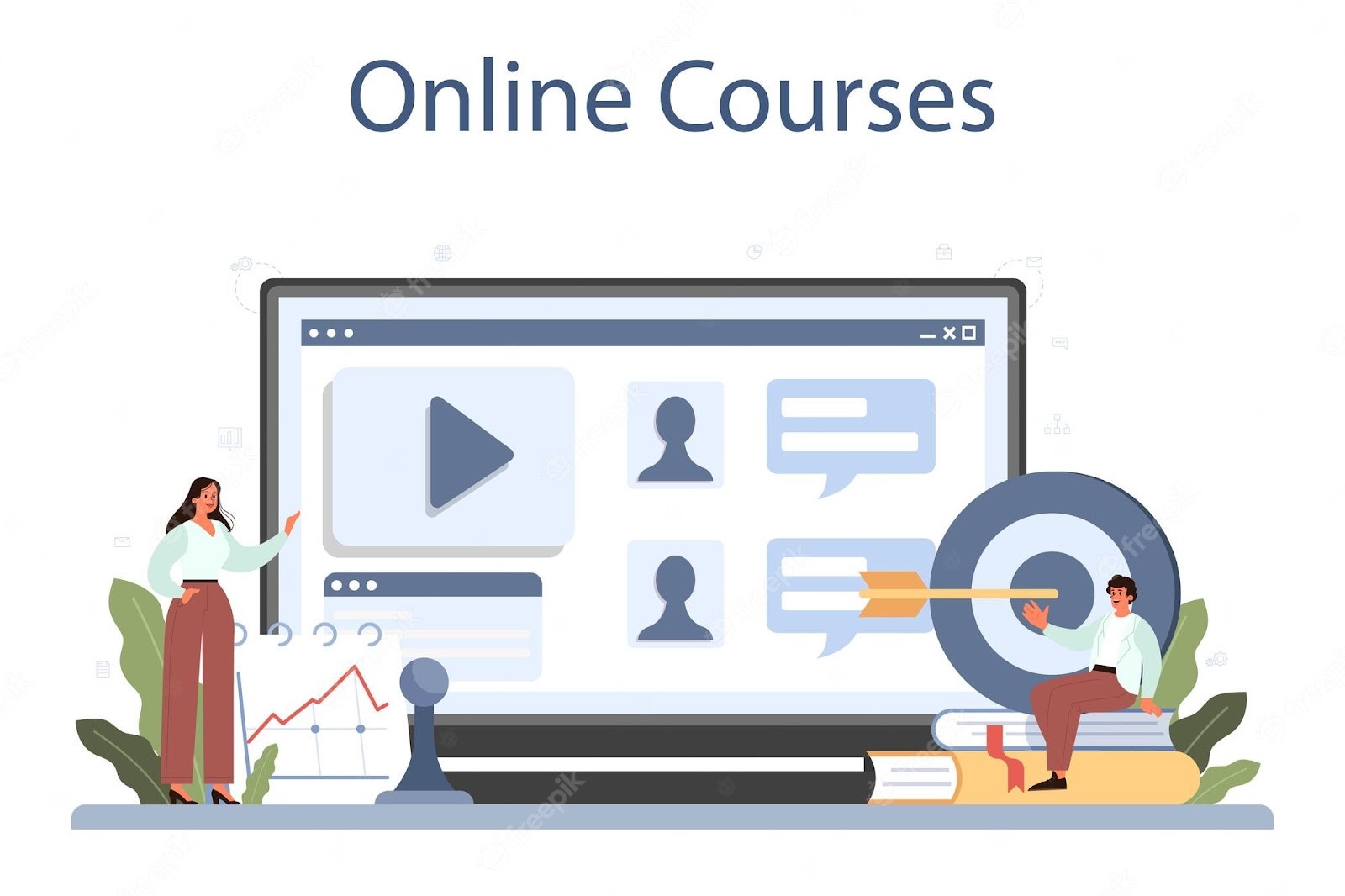If you’re new to the world of digital marketing , it can be difficult to know where to start. With so many different tactics and strategies to choose from, it’s easy to get lost in the sea of options. But don’t be afraid! In this beginner’s guide, we’ll walk you through some of the digital marketing strategiesthe most effective ones that actually work, with concrete examples to illustrate how they can be implemented. From search engine optimization (SEO) to email marketing, social media advertising and content marketing, we’ll cover everything you need to know to get started on the right foot. By the end of this guide, you’ll have a solid understanding of the different digital marketing channels available to you and how to use them to drive traffic, generate leads, and ultimately grow your business.
Introduction: The Importance of Digital Marketing for Businesses of All Sizes
Digital marketing has become an integral part of modern business strategies. As more and more people use the Internet to research products and services, businesses of all sizes must establish a strong online presence to stay competitive in the marketplace. Whether you are a small business owner or a large corporation, digital marketing provides an equal chance of reaching customers around the world.
The beauty of digital marketing is that it is highly targeted, profitable and measurable. Unlike traditional marketing, digital marketing allows businesses to target specific audiences based on their demographics, interests, and behavior. This means you can create personalized messages and experiences for your customers, increasing the likelihood of conversions.
In this beginner’s guide, we’ll take a closer look at some of the most effective digital marketing strategies that have proven successful for businesses in different industries. We will also provide concrete examples of how these strategies have been successfully implemented. By the end of this guide, you will have a better understanding of how digital marketing works and how you can use it to grow your business.
Build a solid foundation: set marketing goals and understand your target audience
Before you start implementing digital marketing strategies, it’s important to build a solid foundation. This involves setting marketing goals and understanding your target audience. These two elements are essential to the success of any marketing campaign.
First of all, it is essential to define clear marketing objectives. You need to know what you want to achieve with your digital marketing efforts. Are you looking to increase traffic to your website, generate more leads, or increase your sales? Once you have set your goals, you can create a plan to achieve them.
Second, it is essential to understand your target audience. Who are you trying to reach? What are their interests, needs and weaknesses? Knowing your target audience will help you tailor your marketing messages and create content that works for them.
For example, if you run an online store that sells eco-friendly products, your target audience is likely to be environmentally conscious consumers. You can create blog posts about the benefits of using eco-friendly products, run social media ads targeting people interested in sustainability, and offer discounts to customers who recommend your store to their friends. .
By setting clear marketing goals and understanding your target audience, you can create targeted digital marketing campaigns that are more likely to resonate with your audience and achieve your desired results.
Content Marketing: Creating Valuable Content That Resonates With Your Audience
Content marketing has become an integral part of digital marketing strategies, and for good reason. Creating relevant content that resonates with your audience can help make your brand a thought leader in your industry, build trust with your audience, and ultimately drive conversions. . But how do you create content that resonates with your audience?
The first step is to understand your audience. What are their weak points? What are their interests? What questions can your brand answer? Once you understand your audience, you can create content that speaks directly to them.
Content created by HubSpot is a great example of content marketing resonating with audiences. They create a variety of content, from blog posts to webinars to e-books, all of which aim to help their audience improve their marketing efforts. Their content is educational, actionable, and always relevant to their audience.
Content created by Glossier is another great example of content marketing resonating with audiences. They create content that not only showcases their products, but also celebrates their customers. Their Instagram feed is filled with user-generated content, showing how their customers use and love their products. This approach not only helps build trust with their audience, but also creates a sense of community around their brand.
In summary, creating valuable content that resonates with your audience is a key part of any digital marketing strategy. By understanding your audience and creating content that speaks directly to them, you can make your brand a thought leader, build trust with your audience, and ultimately drive conversions.
Search Engine Optimization (SEO): Techniques to Improve Your Website’s Ranking in Search Results
Search engine optimization (SEO) is an essential strategy for improving your website’s ranking in search results. If your website is not ranking well in Google search results, potential customers are unlikely to find your business online.
Some simple techniques for improving your website’s ranking include optimizing your website content with relevant keywords, building high-quality backlinks to your website, and ensuring your website is mobile-friendly.
Another important factor to consider is the loading speed of your website. Google prioritizes fast-loading websites. It is therefore essential to ensure that the loading speed of your website does not slow down your SEO efforts.
There are many useful SEO tools available online, including SEMrush , Ahrefs, and Google Analytics, that can help you identify areas of your website that need improvement.
Moz is a concrete example of a company that has successfully used SEO to improve its online presence. Moz is a software company specializing in SEO tools and resources. By creating high-quality content, establishing a solid backlink profile, and constantly optimizing its website, Moz was able to rise to the top of search results for relevant keywords, drive traffic to its website, and increase its customer base.
Paid advertising: how to effectively use platforms such as Google Ads and Facebook Ads
Paid advertising can be a great way to drive traffic to your website and generate sales, but it can also be a money maker if you don’t know what you’re doing. The two most popular paid advertising platforms are Google Ads and Facebook Ads, both of which offer a range of targeting options to help you reach the audience you want.
When it comes to Google Ads, the key is to focus on the right keywords. Think about the phrases your target audience is likely to use when searching for your product or service and create ads tailored to those keywords. Use ad extensions to provide additional information, such as your phone number or a link to a specific page on your website.
Facebook Ads, on the other hand, allow you to target your ads based on various demographic and interest-based criteria. This means you can be very specific about who sees your ads and make sure they’re only shown to people who might be interested in what you have to offer. To create effective Facebook ads, focus on eye-catching visuals and compelling ad copy that speaks directly to your target audience.
The Dollar Shave Club Facebook ad campaign is a concrete example of effective paid advertising. The company’s advertisements featured quirky, humorous videos that resonated with its target audience of budget-conscious young men. By targeting its ads to this specific demographic and using engaging visuals and text, Dollar Shave Club was able to generate significant sales and expand its customer base.
Ultimately, the key to using paid advertising effectively is understanding your target audience and creating ads that directly address their needs and interests. With the right strategy in place, paid advertising can be a powerful tool to grow your business and reach new customers.
Email Marketing: Building an Email List and Creating Effective Email Campaigns
Marketing is a powerful digital marketing strategy that has been around for a long time and continues to yield great results when done right. Building an email list is the first step to an effective email marketing campaign . You can build your list using signup forms on your website, landing pages, and even social media.
However, it’s important to make sure that you’re building your list organically without having to buy email lists, as this can lead to low-quality leads and even get penalized by email service providers.
Once you’ve built your email list, you need to create effective email campaigns that deliver value to your subscribers. This can take the form of helpful tips, exclusive offers, or personalized content. It’s important to segment your email list based on subscriber interests and behavior to ensure that your emails are tailored to each subscriber’s needs.
To make your emails stand out, you also need to focus on your email design and copy. Use eye-catching visuals, concise copy, and clear calls to action to encourage your subscribers to take action.
Online retailer ASOS is a prime example of effective email marketing. They send personalized emails to their subscribers based on their browsing and purchase history, as well as their location and preferences. These emails include product recommendations, exclusive offers, and style tips, all tailored to each subscriber. This personalized approach helped ASOS achieve a high open rate and click-through rate, which translated into increased sales and customer retention.
Social media marketing: how to use social media to engage with your audience and promote your brand
Social media marketing is one of the most effective ways to promote your brand and engage with your audience. With billions of active users on various social media platforms, it’s a great way to connect with people and retain followers.
But with so many brands vying for attention on social media, how can you make sure your message stands out? Here are some tips to help you use social media effectively:
- Know your audience: Before you start posting on social media, make sure you know your target audience. Are they young or old? What are their interests? What kind of content do they interact with? This will help you tailor your message to their preferences and increase their engagement.
- Be consistent: Consistency is key when it comes to social media. Be sure to post regularly and at the right time. You don’t want to post too often and overwhelm your audience, but you also don’t want to post too frequently and be forgotten.
- Use visuals: Visual content is much more engaging than text alone. Use high-quality images, videos, and graphics to grab your audience’s attention and make your posts stand out.
- Encourage user-generated content: Invite your audience to share their own content related to your brand. This not only increases engagement, but also helps build a sense of community around your brand.
- Be responsive: Social media is a two-way conversation. Be sure to respond quickly to comments and posts and engage with your audience. This builds a relationship with your followers and strengthens your brand.
By following these tips, you can use social media to effectively promote your brand and engage with your audience. Don’t be afraid to experiment and try new things to see what works best for your brand.
Influencer marketing: partnering with influencers to reach a wider audience
Influencer marketing has been one of the most successful digital marketing strategies in recent years. This involves partnering with people who have a significant number of social media followers and can influence their followers’ buying decisions. Influencers can be bloggers, YouTubers, Instagrammers, TikTokers or celebrities.
By partnering with influencers in your niche, you can reach a wider audience interested in your products or services. Influencers have already built a loyal following of people who trust their opinions and recommendations. This can be a great opportunity for your brand to leverage its credibility and leverage its follower network.
For example, a beauty brand could partner with a beauty blogger with a strong Instagram following. The blogger could promote the brand’s products to their followers, showing them how to use them and why they love them. This type of endorsement can be very powerful, especially when the influencer’s followers trust their recommendations.
Influencer marketing requires careful planning and research. You need to find the right influencers who match your brand values and have an audience interested in your products or services. You also need to set clear goals and expectations for the partnership and measure the ROI of your influencer campaigns.
Overall, influencer marketing can be a very effective digital marketing strategy for reaching a wider audience and building brand awareness. With proper planning and execution, it can boost sales and help you achieve your marketing goals.
Analytics: Measuring the success of your digital marketing efforts
Measuring the success of your digital marketing efforts is key to understanding what’s working and what’s not. Fortunately, there are various analytics tools that can provide you with valuable data and insights.
Google Analytics is one of the most popular tools for measuring website traffic, user behavior and conversions. By setting goals and tracking events, you can measure how users interact with your website and identify areas for improvement.
Social media platforms also offer their own analysis tools. For example, Facebook Insights provides data on engagement, reach, and demographics, while Twitter Analytics tells you how your tweets are performing and who is engaging with them.
Besides these tools, there are also third-party analytics platforms that can help you track and measure your digital marketing efforts across multiple channels. Popular options include Hootsuite Insights, SEMRush, and Moz.
By regularly analyzing your data and adjusting your digital marketing strategy, you can continually improve your results and achieve your marketing goals. Remember, the key to success is not just generating traffic, but also converting that traffic into leads and sales. So be sure to track your conversion rates and continually test and optimize your campaigns for maximum impact.
Real-life examples: case studies of companies that have successfully used digital marketing strategies
Sometimes the best way to understand digital marketing strategies is to look at real-life examples of companies that have successfully implemented them. Here are some case studies that demonstrate the effectiveness of digital marketing strategies to drive growth and increase revenue:
- Dollar Shave Club – This viral sensation rose to fame through his humorous marketing videos that went viral on social media. By creating a strong online presence, Dollar Shave Club has succeeded in disrupting the traditional razor industry and generating over $240 million in revenue in just five years.
- Airbnb – By using content marketing to create city guides and travel blogs, Airbnb has been able to build trust with potential customers and drive traffic to its website. This strategy has allowed Airbnb to grow from a small start-up to a global travel giant, with more than 150 million users worldwide.
- HubSpot – HubSpot’s inbound marketing strategy is all about creating valuable content that attracts potential customers. By offering free resources like eBooks, webinars, and blog posts, HubSpot was able to generate leads and build customer loyalty.
- Nike – Nike’s social media strategy is to build a community around its brand. By using social media platforms like Instagram, Twitter and Facebook to interact with its customers, Nike has built up a massive base of loyal fans who are passionate about the brand.
These are just a few examples of how digital marketing strategies can help businesses of all sizes succeed. By understanding these strategies and implementing them effectively, you can take your business to the next level and achieve your growth goals.
Conclusion
In conclusion, there are many digital marketing strategies that can help improve your business’s online presence, generate leads, and increase sales. Different digital marketing strategies include SEO, content marketing, online advertising, social media, and email marketing. Each of these strategies has its pros and cons and should be used based on your business goals. It is recommended that you test different digital marketing strategies and measure the results to determine which one works best for your business. Ultimately, it’s important to remember that digital marketing is an ever-evolving discipline and businesses need to be prepared to adapt.











